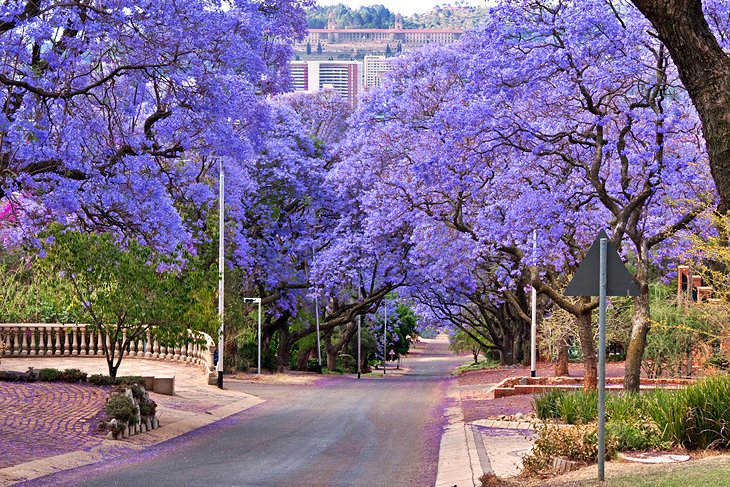The 20-Second Trick For Johannesburg North Attractions
The 20-Second Trick For Johannesburg North Attractions
Blog Article
10 Easy Facts About Johannesburg North Attractions Described
Table of ContentsThe Main Principles Of Johannesburg North Attractions The 20-Second Trick For Johannesburg North AttractionsJohannesburg North Attractions Fundamentals ExplainedFacts About Johannesburg North Attractions RevealedThings about Johannesburg North AttractionsThe smart Trick of Johannesburg North Attractions That Nobody is Talking About
The city owes its location to the visibility of a much more valuable source: gold. The city grew on the edge of the Witwatersrand Key Reef, a below ground stratum of gold-bearing quartz-silica conglomerate that arcs for numerous miles beneath the Highveld. Many of the gold mines in the city discontinued operation in the 1970s, however in its day the Witwatersrand gold sector represented even more than 40 percent of the world's annual gold manufacturing.Johannesburg has a pleasant climate. The city enjoys concerning 8 hours of sunshine per day in both winter season and summertime.
What rainfall the city gets drops virtually solely in the summer season months, commonly in spectacular late-afternoon electrical storms., where several locals still rely on coal for gas.

Some Known Details About Johannesburg North Attractions
The equilibrium of the city is occupied by whites. Accommodation differs in personality and high quality.
Physical development, although rather restricted by transportation, proceeded rapidly as immigration to South Africa, and Johannesburg specifically, increased drastically. This trouble was solved in the 1930s when the auto was presented in automation to South Africa. Cars were, for the many component, confined to the rich, and permitted them to relocate to the north of the city and commute into the centre.
A lot of poor suburban areas were combined, with poor blacks and whites living with each other, although the affluent suburbs were usually scheduled for whites.
The previous system of eleven numbered areas was reorganised in 2006. Marshalltown, as seen from the top of the Carlton Centre. The M1 and M2 run behind the structures, and the southern suburbs expand past the highway limit. The internal city of Johannesburg is located within the city's Area F. The approximated population of the region is 200,000, [] but the variety of people residing in the central city on an informal basis is unknown, as lots of are illegal aliens. Most higher-income residents and white people have transferred to the northern suburban areas and have actually been changed by lower-income black people. The joblessness, education and learning, and age accounts of the location are all unidentified, as a result of the difficulty of acquiring trustworthy details about the area.
Johannesburg North Attractions for Beginners
Centred on the CBD, the region includes the suburban areas of Yeoville, Bellevue, Troyeville, Jeppestown, and Berea to the east. To the west it infects Pageview (Johannesburg North attractions) and Fordsburg. There are small enterprise zones to the south, such as City West-Denver and Benrose. Around 800,000 travelers travel through the central city daily, and it functions as a local purchasing node for visitors from the southerly suburban areas. Yeoville and Bellevue have a mix of house buildings and solitary residential systems on little great deals. The region is situated on a mountainous divide that runs from east to west.

Johannesburg Stadium, a training ground for both the Golden Lions and Orlando Pirates, is nearby. The eastern suburbs of Johannesburg are located in the city's 7th [] and 9th [] regions. The location is additionally functionally incorporated with East Rand border towns beyond the official boundary of Johannesburg, such as Bedfordview and Edenvale (both part of Ekurhuleni Metropolitan Municipality).
10 Easy Facts About Johannesburg North Attractions Shown
R. Tambo International Airport Terminal). The eastern suburban areas are a few of the oldest locations of Johannesburg, there are large communities of Jewish and other European histories, the majority of the populace is English talking. There are three fairway as well as a variety of secured ridges with viewsites. There are numerous well-developed and up-market entertainment and buying locations in the east such as the Eastgate Mall and the Greenstone shopping center.
The location is mostly composed of old "matchbox" homes, or four-room homes built by the government, that were developed to give inexpensive holiday accommodation for black employees throughout racism. Soweto is an acronym, standing for "South Western Townships". Road after street in this field is lined with matchboxes; nevertheless, there are a couple of smaller sized areas where prosperous Sowetans have actually built houses that are more similar in stature with those in more upscale residential areas.
Hostels are one more popular physical feature of Soweto. Initially constructed to house male migrant employees, many have been improved as houses for couples and family members. The N1 Western Bypass skirts the eastern limit of Soweto. The suburban area was not traditionally enabled to develop employment centres within the location, so nearly all of its Continue homeowners are travelers to other components of the city.
An Unbiased View of Johannesburg North Attractions
The N1 Western Bypass attaches the northern residential areas with the north-western suburbs. The suburbs in the north suburbs are generally formal, without considerable locations of informal housing, or housing that lacks a permanent structure. This is an established location, there is a pattern of land use modification from domestic to commercial, specifically along major arterial roadways and around recognized nodes.
Roadways to the east and west are less well established, Recommended Site as there are no freeways taking a trip in that instructions. Towards the northern border of the city, the thickness of growth lowers, leaving big locations of undeveloped land around Midrand.
Excitement About Johannesburg North Attractions
The very first suburb to the north of the inner city is Parktown, which lies on a hillside forgeting the internal city and Hillbrow. It has several wealthy locals and Edwardian-style manors, in addition to the Education and Clinical schools of the University of the Witwatersrand. The large concrete Charlotte Maxeke Johannesburg Academic Hospital controls the skyline of Parktown.
Report this page